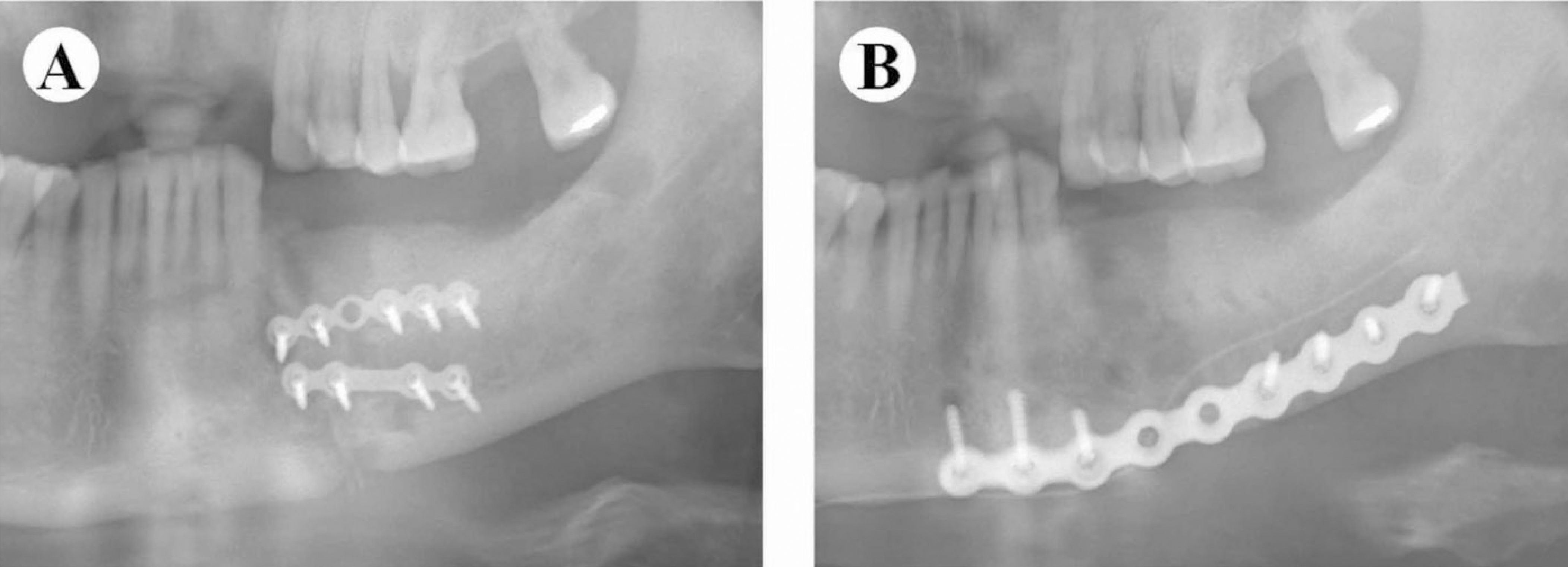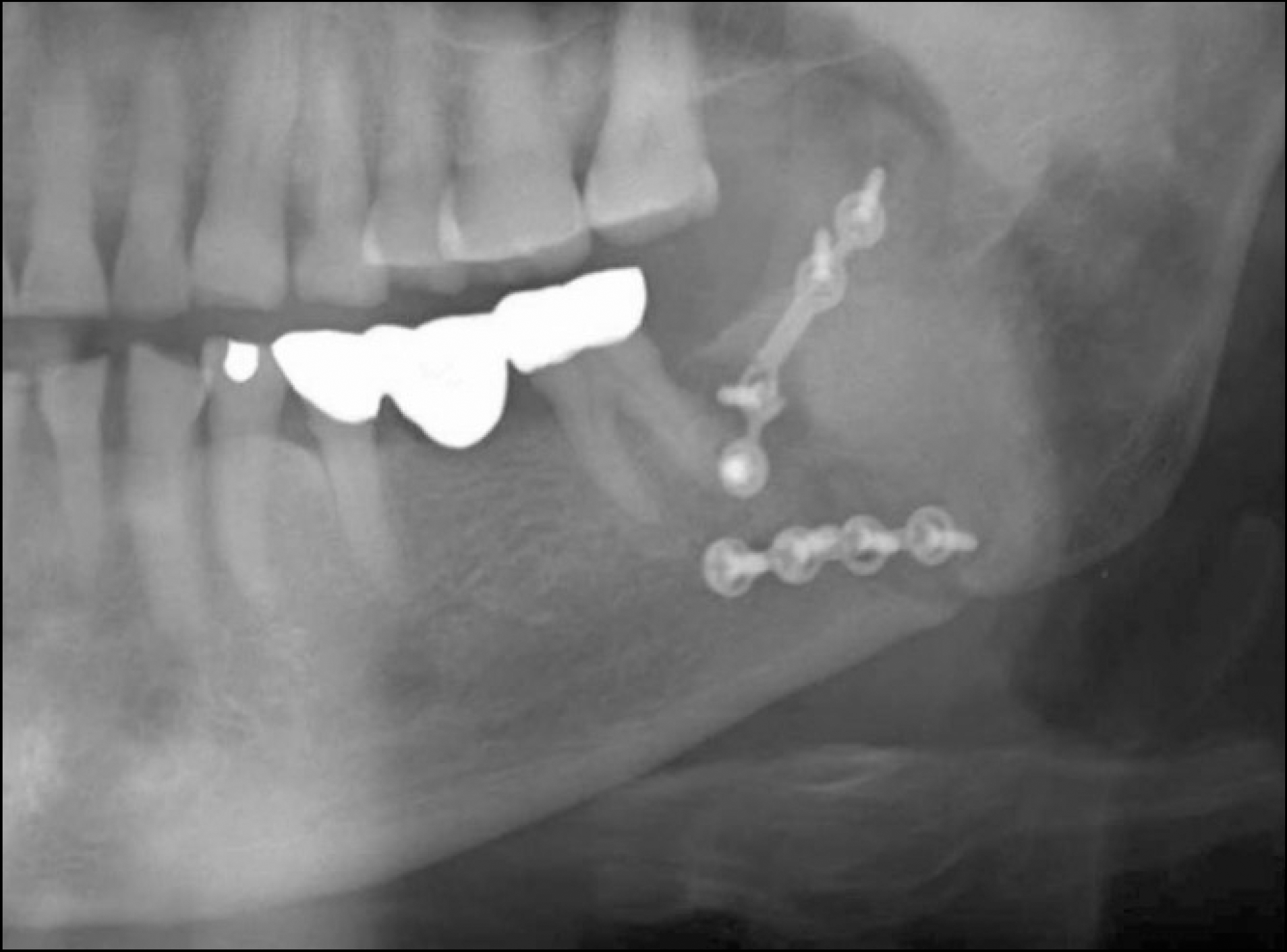1. Turvey TA. Midfacial fractures: a retrospective analysis of 593 cases. J Oral Surg. 1977; 35:887–91.
2. Ugboko VI, Oginni FO, Owotade FJ. An investigation into the relationship between mandibular third molars and angle fractures in Nigerians. Br J Oral Maxillofac Surg. 2000; 38:427–9.

3. Fridrich KL, Pena-Velasco G, Olson RA. Changing trends with mandibular fractures: a review of 1,067 cases. J Oral Maxillofac Surg. 1992; 50:586–9.

4. Kawai T, Murakami S, Hiranuma H, Sakuda M. Radiographic changes during bone healing after mandibular fractures. Br J Oral Maxillofac Surg. 1997; 35:312–8.

5. Horan TC, Gaynes RP, Martone WJ, Jarvis WR, Emori TG. CDC definitions of nosocomial surgical site infections, 1992: a modification of CDC definitions of surgical wound infections. Infect Control Hosp Epidemiol. 1992; 13:606–8.

6. Fordyce AM, Lalani Z, Songra AK, Hildreth AJ, Carton AT, Hawkesford JE. Intermaxillary fixation is not usually necessary to reduce mandibular fractures. Br J Oral Maxillofac Surg. 1999; 37:52–7.

7. Bell RB, Wilson DM. Is the use of arch bars or interdental wire fixation necessary for successful outcomes in the open reduction and internal fixation of mandibular angle fractures? J Oral Maxillofac Surg. 2008; 66:2116–22.

8. Coletti DP, Salama A, Caccamese JF Jr. Application of intermaxillary fixation screws in maxillofacial trauma. J Oral Maxillofac Surg. 2007; 65:1746–50.

9. Gaujac C, Ceccheti MM, Yonezaki F, Garcia IR Jr, Peres MP. Comparative analysis of 2 techniques of double-gloving protection during arch bar placement for intermaxillary fixation. J Oral Maxillofac Surg. 2007; 65:1922–5.

10. Williams JG, Cawood JI. Effect of intermaxillary fixation on pulmonary function. Int J Oral Maxillofac Surg. 1990; 19:76–8.

11. Roccia F, Tavolaccini A, Dell'Acqua A, Fasolis M. An audit of mandibular fractures treated by intermaxillary fixation using intraoral cortical bone screws. J Craniomaxillofac Surg. 2005; 33:251–4.

12. Gordon KF, Reed JM, Anand VK. Results of intraoral cortical bone screw fixation technique for mandibular fractures. Otolaryngol Head Neck Surg. 1995; 113:248–52.

13. Coburn DG, Kennedy DW, Hodder SC. Complications with intermaxillary fixation screws in the management of fractured mandibles. Br J Oral Maxillofac Surg. 2002; 40:241–3.

14. Ellis E 3rd, Walker LR. Treatment of mandibular angle fractures using one noncompression miniplate. J Oral Maxillofac Surg. 1996; 54:864–71.

15. Dimitroulis G. Management of fractured mandibles without the use of intermaxillary wire fixation. J Oral Maxillofac Surg. 2002; 60:1435–8.

16. Laurentjoye M, Majoufre-Lefebvre C, Caix P, Siberchicot F, Ricard AS. Treatment of mandibular fractures with Michelet technique: manual fracture reduction without arch bars. J Oral Maxillofac Surg. 2009; 67:2374–9.

17. Jeong CH, Jeong JW, Kwon ST. The siginificance of radiographic followup of mandibular fractures. J Korean Soc Plast Reconstr Surg. 1998; 25(5):860–865.
18. Durham JA, Paterson AW, Pierse P, Adams JR, Clark M, Hierons R, et al. Postoperative radiographs after open reduction and internal fixation of the mandible: are they useful? Br J Oral Maxillofac Surg. 2006; 44:279–82.

19. Sim SY, Park HJ, Lee JM, Lee HS. An overview of pain measurements. Korean J. Meridian Acu. 2007; 24:77–97.
20. White A. Measuring pain. Acupunct Med. 1998; 16:83–7.

21. Maloney PL, Lincoln RE, Coyne CP. A protocol for the management of compound mandibular fractures based on the time from injury to treatment. J Oral Maxillofac Surg. 2001; 59:879–84.

22. Anderson T, Alpert B. Experience with rigid fixation of mandibular fractures and immediate function. J Oral Maxillofac Surg. 1992; 50:555–60.

23. The Korean Association of Oral and Maxillofacial Surgeons. Textbook of oral and maxillofacial surgery. 2nd ed.Seoul: Dental & Medical Publishing Co.;2005.







 PDF
PDF ePub
ePub Citation
Citation Print
Print



 XML Download
XML Download